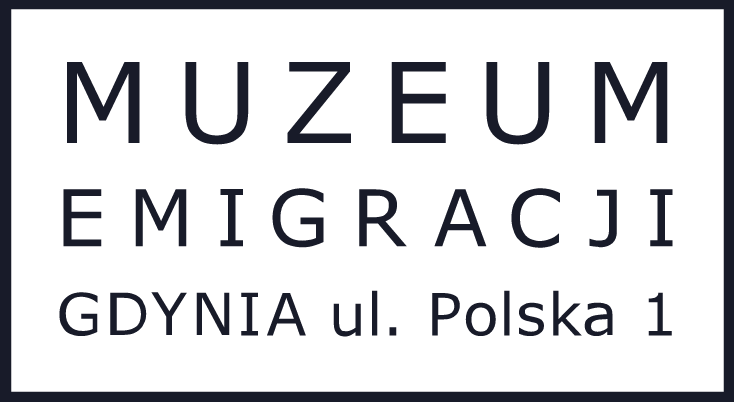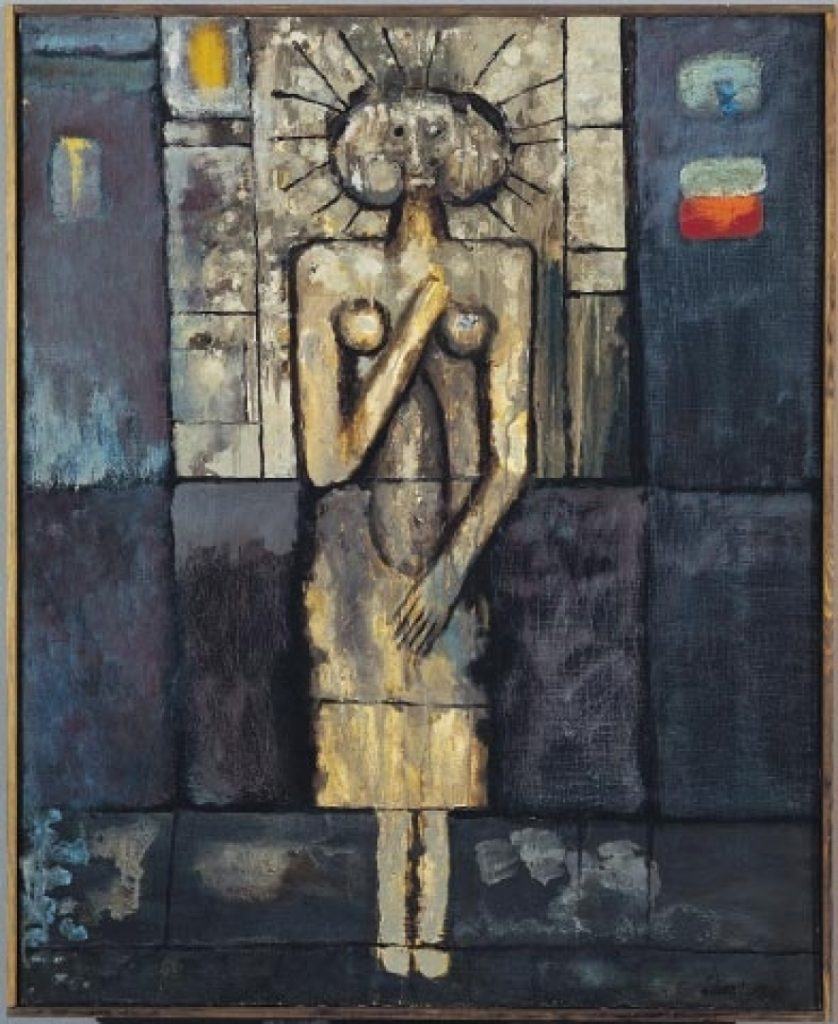Emigrant artists: escapees, outcasts, voluntary residents, citizens of the world…?
The Emigrations of Jan Lebenstein
Magdalena Szafkowska | National Museum in Wrocław
December 10, 2014, 5:30 pm | Infobox in Gdynia
A friend of Miron Białoszewski and an artist affiliated with the Parisian „Culture”, always independent and a little alienated – Jan Lebenstein took good care of his extremely personal art all his life. He preferred to nourish his imagination with relics of ancient civilizations rather than with contemporary styles and trends. Through his processing of Sumerian, Babylonian, and Egyptian mythologies, he established his own subtle and inimitable language. As part of „Beyond the borders of art” series, we invite you to get acquainted with the output of an artist who occupies an exceptional place in the history of Polish art of the 20th century. The lecture will be conducted by Magdalena Szafkowska of the National Museum in Wrocław.
This is the second time the Emigration Museum in Gdynia ventures „Beyond the Borders of Art” and extends an invitation to get acquainted with the silhouettes of distinguished, celebrated (but also less recognized) emigrant artists. The cycle of eight lectures will familiarize participants with artistic fortunes of creators that voluntarily chose – or were forced to choose – a life away from Poland and will retrace their influence over the realm of art in Poland and in the world.
Similarly to the last edition of the vastly popular lectures series, the list of protagonists features artists of various times, styles, and medias. We have invited distinguished specialists from all over Poland to host the lectures, people with deep knowledge about their protagonists – art historians, exhibition curators, and authors of monograph publications. Each story will therefore, gain an additional, personal dimension and will become a unique journey following the footsteps of the creators. The lectures are addressed to a wide audience – they are open and non-academic in format and popularizational in character. The second edition of the cycle was inaugurated on October 22, 2014 by Hubert Bilewicz’s lecture on Tamara Łempicka.
Jan Lebenstein
Lebenstein’s life, as well as the choices he had made, all stemmed from his alienation from a hostile environment, as well as from his rejection of post-war political reality in Poland and in the Eastern and Central Europe. His personal tragedies played a similarly important role: the loss of his father – presumably murdered by the Soviets during the war – and his brother, shot dead by the secret police in 1946.
All those circumstances, augmented by his extraordinary sensitivity (even for an artist), determined his worldview and the way he transposed it onto paper and canvas.
Lebenstein’s migrations can be understood quite literarily due to his permanent stay in Paris, and yet he had chosen a particular kind of „inner emigration” much earlier – in Warsaw. He had chosen alienation and isolation from the environments he lived and created in (also later in Paris). It was manifested by his lifestyle, but mostly by his painting – completely separate and independent from trends.
Already at the beginning of his artistic way, unexpectedly out of a strong inner need and almost out of necessity, he tackled and processed in various ways the motif of a man stretched out on an axis – grotesquely formatted just like the reality that surrounded him. This was his way of closing the prize-wining, vividly mature series of tale-like, nostalgic sceneries from Rembertów during the legendary „thaw era” showcase in Warsaw Arsenal. Interestingly, the very same sceneries – often compared to Utrillo – inspired critics to predict a brilliant career for this your artist.
The lecture on Jan Lebenstein’s output will be conducted by Magdalena Szafkowska of the National Museum in Wrocław.
Magdalena Szafkowska – graduate of the Department of History of the University of Wrocław in 1981. Beginning with that year, she worked for Gabinet Grafiki [ang. Chamber of Graphic Design – trans.] in the Library of the National Ossoliński Institute. Since 1986, she has been working for the National Museum in Wrocław – in the Department of Ancient Graphic Design from 1992 to 2008, later in the Department of 20th and 21st Century’s Graphic Design and Drawing. Author of exhibitions and catalogues on the subject of the iconography of Old Wrocław, as well as presentations and studies of contemporary Polish artists, such as: Eugeniusz Get Stankiewicz, Teresa Jakubowska, Zdzisław Jurkiewicz, Aleksandra Jachtoma. In 2014, she contributed her work during the organization of Jan Lebenstein’s exhibition based on the collection of the National Museum in Wrocław. Between 1999-2013 she held workshops on museum studies for students of University of Wrocław’s Department of Art History.
„BEYOND THE BORDERS OF ART”SERIES PROGRAM
From October 2014 to June 2015 the lectures will take place once a month between 5.30 pm and 7 pm at the Infobox in Gdynia.
1.Tamara Łempicka (1898-1980), Hubert Bilewicz Ph.D., University of Gdańsk, October 22
2.Wojciech Fangor (1922), Ewa Gorządek, Center of Contemporary Art in Warsaw, November 13
3.Jan Lebenstein (1930-1999), Magdalena Szafkowska, National Museum in Wrocław, December 10
4.Marek Żuławski (1908-1985), Sławomir Majoch, Nicolaus Copernicus University Museum in Toruń, January 14
5.Roman Opałka (1931-2011), Joanna Sosnowska Ph.D., Institute of Arts of Polish Academy of Science in Warsaw, February 11
6.Zbigniew Rybczyński (1949), Paweł Sitkiewicz Ph.D., University of Gdańsk, March 11
7.Piotr Uklański (1968), Łukasz Ronduda Ph.D.,Center of Contemporary Art in Warsaw, April 8
8.Krzysztof Bednarski (1953), professor Waldemar Baraniewski, Academy of Fine Arts in Warsaw, June 18
Here’s what Hubert Bilewicz Ph.D. – the author of the concept and program of „Beyond the Borders of Art”– has to say about the series:
„Were emigrant artists those who had to migrate or those who wanted to? Perhaps they were those who could leave? The Emigration Museum in Gdynia launches the second edition of the lecture series devoted to Polish emigrant artists. The ambivalence of their statuses, conditions, and motivations is somewhat troublesome, yet it may propose a unique value to the narrative about the complicated and looped fates of Polish artists or artists in general. Some of them were destined to leave, others volunteered. Significantly, the question of Polish presence in contemporary art entails questions about the reach and the importance of Polish artists’ participation in the international circuit of art, as well as questions about the character and the reach of the reception of Polish art. This is particularly valid for emigrant artists, whose lives and works were stretched between Poland and the world, artists curious of the world, yet – at the same time – torn with yearnings; those who assimilated with their new environments or were alienated from them; artists who remained abroad and those who repeatedly returned to their homeland; citizens of the world… The cosmopolitan or irrational formula of artistic life is closely connected to geopolitical or national implications, local experiences, and – lastly – individual fates. Although contemporary art is no longer limited by borders, the artistic life of the 20th century was defined by multiple borders indeed: national ones, environmental, generational, ideological, stylistical… Migrations also tended to give artistic life momentum as mobility and freedom are both part of creative formula.”
Hubert Bilewicz – art historian, academic teacher, educator. Works at the Institute of Art History of the University of Gdańsk. Academically, primarily focused on researching the history of the so-called Sopot School, as well as the artistic environment of Gdynia after 1945. He is particularly interested in various implications of art – both artistic and non-artistic ones.


